Classic Studies on Christology (28 vols.)
Digital Logos Edition
Overview
Speaking on Christology, William S. Plumer states, “As one is sound or corrupt here, so is he substantially right or wrong in the main. Both now and in the last day, the great question in determining character and destiny is the same: ‘What think ye of Christ?’”
These 28 volumes feature the best in nineteenth- and early-twentieth-century scholarship on Christ’s birth, life, ministry, death, burial, resurrection, ascension, and his role as judge, high priest, and second person of the trinity. These are some of the most important and impactful works in discussions ranging from Jesus’ historicity, to the theology of his human and divine nature, to the nature of redemption. Joining Plumer in this collection are Archibald T. Robertson, H. B. Swete, William Sanday, and William Milligan.
The Logos editions of these volumes are enhanced by amazing functionality and features. Citations link directly to English translations and original-language texts, and important terms link to dictionaries, encyclopedias, and a wealth of other resources in your digital library. The Topic Guide lets you perform powerful searches to instantly gather relevant biblical texts and resources. Tablet and mobile apps let you take the discussion with you. With Logos Bible Software, the most efficient and comprehensive research tools are in one place, so you get the most out of your study.

- Provides 28 classic works on the theological importance of the person and work of Jesus Christ
- Includes discussions ranging from Jesus’ historicity to the nature of redemption
- Presents a wide variety of theological perspectives
- Title: Classic Studies on Christology
- Volumes: 28
- Pages: 9,091+
- A Jewish View of Jesus by H. G. Enelow
- A History of the Doctrine of the Work of Christ in Its Ecclesiastical Development, vol. 1 by Robert S. Franks
- A History of the Doctrine of the Work of Christ in Its Ecclesiastical Development, vol. 2 by Robert S. Franks
- Outline of New Testament Christology: A Study of Genetic Relationship within the Christology of the New Testament Period by John Cowper Granbery
- The Doctrine of the Person of Jesus Christ by H. R. Mackintosh
- The Ascension and Heavenly Priesthood of Our Lord by William Milligan
- The Resurrection of Our Lord by William Milligan
- The Rock of Our Salvation: A Treatise respecting the Natures, Person, Offices, Work, Sufferings, and Glory of Jesus Christ by William S. Plumer
- A Study in Christology by H. M. Relton
- His Only Son: The Truth of the Divinity of Christ by William F. Robison
- Our Lord: An Affirmation of the Deity of Christ by William Childs Robinson
- The Teaching of Jesus concerning God the Father by Archibald Thomas Robertson
- The Christology of St. Paul by S. Nowell Rostron
- Christologies: Ancient and Modern by William Sanday
- The Offices of Christ: Abridged from the Original Work of the Rev. George Stevenson by George Stevenson and William S. Plumer
- The Birth and Infancy of Jesus Christ: According to the Gospel Narratives by Louis Matthews Sweet
- The Ascended Christ: A Study in the Earliest Christian Teaching by Henry Barclay Swete
- The Appearances of Our Lord after the Passion: A Study in the Earliest Christian Tradition by Henry Barclay Swete
- The Heavenly Session of Our Lord: An Introduction to the History of the Doctrine by Arthur J. Tait
- The Sinlessness of Jesus: An Evidence for Christianity by Carl Ullmann
- The Messianic Hope in the New Testament by Shailer Mathews
- Jesus Christ: His Times, Life, and Work by E. de Pressensé
- The Christ of History: An Argument Grounded in the Facts of His Life on Earth by John Young
- The Christ of the Fourth Gospel: A Miracle of Truth or a Miracle of Falsehood by J. M. Denniston
- Around the Cross: Some of the First Principles of the Doctrine of Christ by W. Hay M. H. Aitken
- Mediatorial Sovereignty: The Mystery of Christ and the Revelation of the Old and New Testaments, vol. 1 by George Steward
- Mediatorial Sovereignty: The Mystery of Christ and the Revelation of the Old and New Testaments, vol. 2 by George Steward
- Messiah the Prince: The Mediatorial Dominion of Jesus Christ by William Symington
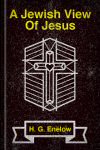
Rabbi H. G. Enelow helps us see Jesus the way modern Jews see him. Though Jesus is historically somewhat taboo among Jewish people, Jesus’ Jewish background and prevalence in Western history and culture make him an important figure for everyone to understand. Enelow’s conversational volume is an excellent tool for studying one of the most famous Jews of all time. This volume provides the opportunity to study Jesus as seen by the nation he was born into.
H. G. Enelow (1877–1934) was rabbi of the Congregation of Adath Israel in Louisville, Kentucky. He graduated from the Hebrew Union College in Cincinatti. He authored several books expositing the Jewish faith for general audiences.
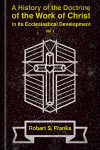
This two-volume treatise from Robert S. Franks tracks the development of what the church has believed about Christ’s work on earth and on the cross over two millennia. Instead of an analysis of the Bible, Franks’ focus is on the writings of Church Fathers and leaders through the centuries. Volume 1 analyzes Christian thinkers from the Apostolic Fathers and the Apostle’s Creed to Calvin and the Formula of Concord.
Robert S. Franks was principal of Western College, Bristol and a scholar of St. John’s College, Cambridge.
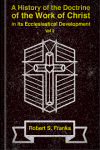
This two-volume treatise from Robert S. Franks tracks the development of what the church has believed about Christ’s work on earth and on the cross over two millennia. Instead of an analysis of the Bible, Franks’ focus is on the writings of Church Fathers and leaders through the centuries. Volume 2 analyzes Christian thinkers from Fausto Paolo Sozzini and Socianism to Brooke Westcott and modern Protestant Christology in England and America.
Robert S. Franks was principal of Western College, Bristol and a scholar of St. John’s College, Cambridge.
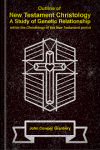
This unique volume helps us see where the Bible and earliest Christian writings echo and build off one another in speaking about Christ. In this text—his dissertation at the University of Chicago—John Cowper Granbery surveys the Christological elements of the New Testament canon and Christian literature written in the same period.
John Cowper Granbery (1829–1907) was a bishop in the Southern Methodist church. He served as a chaplain in the Civil War and was professor of Vanderbilt University in 1875.
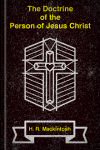
H. R. Mackintosh provides an introductory survey of Christology, seeking “to explain in detail how God became, for our redemption, incarnate in the person of Jesus Christ.” The first half of the work contains a chronological narrative history of the doctrine of Christ that is centered around major theological developments. The second half covers the major philosophical and theological issues of the God-man. Mackintosh provides extensive references to other texts, offering a guide to Christological discussions circulating at the beginning of the twentieth century.
H. R. Mackintosh (1870–1936) was a professor of divinity at New College, Edinburgh, from 1904 to 1936. He was a close friend of P. T. Forsyth, and the two held similar views of the kenotic doctrine of the incarnation. His works include The Doctrine of the Person of Jesus Christ and Christian Experience of Forgiveness.
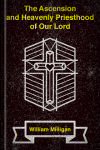
In this volume, professor William Milligan moves beyond the death, burial, and resurrection of Jesus, to examine the theological implications of Christ’s ascension and role as our heavenly intercessor. Rooted in the Bible, these lecture’s detail the significance of Christ’s ascension, his heavenly priesthood, and his work through the Spirit.
William Milligan (1821–1893) was professor of divinity and biblical criticism at the University of Aberdeen. He was educated at the University of Halle in Germany.
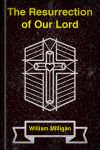
For Christians, Jesus’ resurrection marks a new era in the course of human events. In this volume of lectures, professor William Milligan details everything the resurrection means. Milligan begins by analyzing the biblical and secular evidence of the Resurrection, then he addresses several objections and alternate theories. He then moves on to discuss the theological significance of the Resurrection for Christians, the church, and the rest of the world.
William Milligan (1821–1893) was professor of divinity and biblical criticism at the University of Aberdeen. He was educated at the University of Halle in Germany.
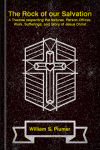
“The great central truth of the religion of sinners relates to the person, character, work sufferings, offices, and glory of Jesus Christ.” With these words William S. Plumer begins his treatise on Christ. Writing to a general audience, Plumer progressively builds his case for Christ as the most significant figure in history.
William S. Plumer (1802–1880) is well-known for his theological writings, including Studies in the Book of Psalms, The Law of God, The Grace of Christ, Vital Godliness, and Jehovah-Jireh.
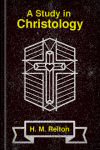
A Study in Christology
- Author: H. M. Relton
- Publisher: SPCK
- Publication Date: 1917
This volume contains H. M. Relton’s work, A Study in Christology. Relton focuses primarily on the dual nature of Christ as fully God and fully man. He surveys the history of heresies and philosophies associated with the doctrine of the God-man.
H. M. Relton (1882–1971) earned his DD from the University of London.
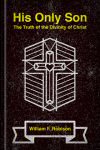
In his foreword, William F. Robison calls “The number of those, who . . . have been getting farther and farther away from the sacred truth of Christ’s divinity, is positively appalling.” In this volume—taking its title from the second line of the Apostles Creed—William F. Robison seeks to reestablish the legitimacy and importance of Christ’s status as Son of God.
William F. Robison, SJ, (1871–1944) was a professor of theology at St. Louis University and a member of the Society of Jesus.
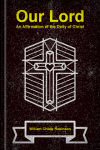
Our Lord: An Affirmation of the Deity of Christ
- Author: William Childs Robinson
- Publisher: Eerdmans
- Publication Date: 1937
- Pages: 200
This volume contains William Childs Robinson’s work, Our Lord: An Affirmation of the Deity of Christ. Writing against the tide of liberal theologians abandoning the doctrine of Christ’s divinity, Robinson vigorously defends the necessity and wonder of Christ as fully God and fully man.
William Childs Robinson (1897–1982) was a professor of church history, church polity, and apologetics at Columbia Theological Seminary.
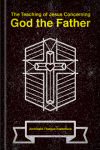
In this volume, Archibald Thomas Robertson examines how Jesus Christ, the Son of God, characterizes God the Father in the Gospels. Robertson offers “direct exegesis of the words of Jesus,” writing “after much study of what men have written concerning God and . . . the truth that modern scholarship has to offer.” In this volume, written for general audiences, he leaves “no references to the literature of the subject to cumber the pages.”
Archibald Thomas Robertson (1863–1934) was a renowned scholar and a terrific preacher. He was educated at Wake Forest University and Southern Baptist Theological Seminary. In 1892, Robertson was appointed professor at Southern Baptist Theological Seminary where he taught until 1934. He was a founding member of the Baptist World Congress, now known as the Baptist World Alliance. Throughout his life, he wrote 41 books ranging from grammars to simple character studies.
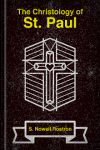
S. Nowell Rostron describes Pauline theology as “the application of [Paul’s] living faith in Christ to the experiences and problems of life and the unfathomed mysteries of eternity.” He says for Paul, “all theology is Christology.” Throughout this work on Paul’s theology, Rostron constantly seeks to reveal the innate connection between the work and the person of Christ.
S. Nowell Rostron was vicar of St. Lawrence, Kirkdale, principal of St. John’s Hall, Durham, and a scholar of St. John’s College, Cambridge.

In Christologies Ancient and Modern, William Sanday compares how ancient and modern theologians have understood the person and work of Christ. Sanday aims to make these thoughts accessible to a general audience. He also assesses the landscape of theology at the beginning of the twentieth century and explains how the history of orthodox Christology is consistent.
William Sanday (1843–1920) was Dean Ireland’s Professor of Exegesis of Holy Scripture at Oxford between 1883 and 1895, as well as Lady Margaret Professor of Divinity and canon of Christ Church between 1895 and 1919. His works include The Authorship and Historical Character of the Fourth Gospel, The Gospels in the Second Century, and Outlines of the Life of Christ.
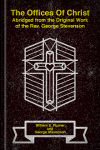
Offices of Christ analyzes Christ’s offices as priest, and king. It examines Christ’s function as head of the church and as a mediator between man and God. This is an abridged edition of George Stevenson’s work, edited by William S. Plumer.
William S. Plumer (1802–1880) is well-known for his theological writings, including Studies in the Book of Psalms, The Law of God, The Grace of Christ, Vital Godliness, and Jehovah-Jireh.
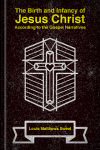
Louis Matthews Sweet’s volume discusses the legitimacy and significance of the Gospel accounts of Jesus birth and infancy. Sweet argues that the introductory chapters of Matthew and Luke have been, and continue to be crucial in developing “feelings of tenderness for childhood and respect for womanhood which are distinctly Christian.” Sweet answers early twentieth-century attacks on these passages and discusses how they are vital to establishing the validity of the Gospels and a right understanding of Christ’s divinity and humanity.
Louis Matthews Sweet (1869–1950) is also the author of The Makin’ o’ Joe and The Verification of Christianity: Introductory Studies in Christian Apologetics.
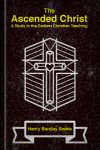
In this volume, Henry Barclay Swete examines Jesus’ resurrection and ascension and shows how these inform our understanding of his role as king, priest, prophet, mediator, judge, and much more. Swete’s lectures are intended to train young clergymen and encourage “all whose ambition it is to live their lives in Christ.”
Henry Barclay Swete (1835–1917) was an Anglican clergyman and noted biblical scholar who published works on the Old and New Testaments, as well as on Christian doctrine. He was ordained in 1838 and became a theological lecturer and tutor at Caius College in 1869. He then served as professor of pastoral theology at King’s College, London, and later became regius professor of divinity at Cambridge in 1890. He received an honorary doctorate of divinity from the University of Glasgow in 1901.
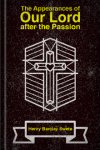
This study by Anglican clergyman Henry Barclay Swete examines all of the Gospel accounts of Jesus after his resurrection from the dead. Swete argues that Christ’s resurrection and ascension are vital to the lives and hopes of Christians. It is written to encourage a general audience.
Henry Barclay Swete (1835–1917) was an Anglican clergyman and noted biblical scholar who published works on the Old and New Testaments, as well as on Christian doctrine. He was ordained in 1838 and became a theological lecturer and tutor at Caius College in 1869.
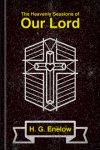
In this volume, Arthur J. Tait seeks to establish the importance of Christ reigning in heaven, at the right hand of the Father. Tait argues that Christ’s intercessory ministry in heaven is of a very different nature than his propitiatory intercession on earth. Propitiation, he argues, was accomplished fully at the Cross. His role as heavenly intercessor is very different.
Arthur J. Tait was principal of Ridley Hall at Cambridge, and examining chaplain to the Bishop of Liverpool.
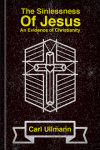
Carl Ullmann’s treatise deals with significance of Jesus’ sinlessness. Ullmann develops the idea of sin, and what it means to be sinless. He addresses arguments against Christ being sinless and fleshes out the implications of Christ’s sinlessness and his role as mediator between God and man.
Carl Ullmann (1796–1865) was a German Calvinist theologian. He studied at Heidelberg and Tübingen. He was a professor of church history, dogmatics, and symbolics at Heidelberg University and the University of Halle.
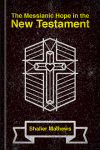
In this volume, Shailer Mathews traces the concept of the messiah from its beginnings in Judaism to early twentieth-century Christianity. He examines historic Jewish beliefs about the messiah and compares them to the teachings of Jesus. He also discusses how they have been expressed through the Christian church.
Shailer Mathews (1863–1941) was dean of the University of Chicago Divinity School. He was a proponent of the Social Gospel and advocated many progressive theological ideas.
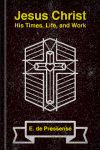
This work from Edmond de Pressensé is part of a series of works on early Christianity. It seeks to reestablish Christ’s work as the central theme of Christianity through a close biblical examination of his Jewish heritage, his early life, his public ministry, and his trial, death, burial, and resurrection.
Edmond de Pressensé (1824–1891) was a French Protestant. He studied at the University of Lausanne, the University of Halle, and Humboldt University. He became an evangelical pastor and was known as a powerful orator.
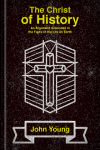
“This book appeals to those who are prepared to treat, with dispassionate criticism, one of the gravest subjects of human inquiry.” In this volume, John Young build a comprehensive case for Jesus’ identity as savior of the world through the historical facts of Jesus’ life. Young argues the facts of Christ’s life and teachings all consistently affirm Christ being who he said he was.
John Young was an English lawyer and theologian.
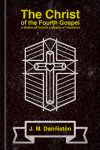
In this volume, J. M. Denniston argues for the divinity of Christ from the Gospel of John. He “neither assumes, nor argues for, the authenticity of the Fourth Gospel,” but “simply accepts that fact that such a memoir of Christ exists, and argues upward from that to its truthfulness in the highest respect.”
J. M. Denniston is also the author of The Sacrifice for Sin as Revealed in the Law and the Gospel.
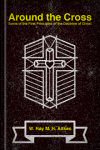
In this volume, W. Hay M. H. Aitken brings readers’ focus back to the Cross again. Written for the general audience, Aitken provides a thorough introduction to the concepts of repentance, justification, sanctification, and more. Aitken points to how Christ and his cross are at the foundation of all of these.
W. Hay M. H. Aitken (1841–1927) is also the author of The Doctrine of Baptism: Mechanical or Spiritual and The Highway of Holiness: Helps to the Spiritual Life.
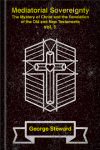
This landmark two-volume work from George Steward examines the entire Old and New Testaments to construct “a Christology, so conceived and wrought out as to comprise the entire foundation and superstructure of the Bible.” Steward illuminates how the entire Bible centers around God’s righteous rule and reign, and a plan for redemption through Christ. Volume 1 contains an introduction an Steward’s analysis of the Old Testament and a portion of the New Testament.
George Steward (1803–1866) was a distinguished New Testament scholar. He is also the author of The Argument of the Epistle to the Hebrews.
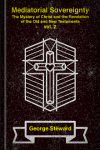
This landmark two-volume work from George Steward examines the entire Old and New Testaments to construct “a Christology, so conceived and wrought out as to comprise the entire foundation and superstructure of the Bible.” Steward illuminates how the entire Bible centers around God’s righteous rule and reign, and a plan for redemption through Christ. Volume 2 contains the second portion of Steward’s analysis of the New Testament and a conclusion.
George Steward (1803–1866) was a distinguished New Testament scholar. He is also the author of The Argument of the Epistle to the Hebrews.
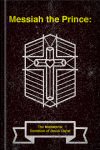
William Symington’s Messiah the Prince, first published in 1839, is an important work in modern Christology. Symington offers “a condensed, yet comprehensive, view of the nature, properties, extent, and duration, of the kingdom of the Messiah.” This volume also includes a substantial memoir of William Symington by his sons.
William Symington (1795–1862) was a professor of systematic theology at the Reformed Presbyterian Theological Hall and a minister at Great Hamilton Street Reformed Presbyterian Church in Glasgow, where he was a popular preacher.
Reviews
13 ratings

Forrest Cole
11/9/2021
Prophet_kevin
4/1/2016

John L. Jefferson
8/29/2015

M. David Johnson
3/27/2015

Richard Villarreal
12/30/2014
Edgar Nazario
12/5/2014

Raymond Sevilla
11/29/2014

Doug
11/25/2014

Whyndell Grizzard
11/22/2014